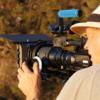Search the Community
Showing results for tags 'film grain'.
-
Check out this affordable 4K Film Grain Pack http://grainzilla.com/4k-film-grain-pack/ Also download free samples here: http://grainzilla.com/free-film-grain-download/ https://vimeo.com/97784036
- 1 reply
-
- Film Grain
- Film Looks
- (and 5 more)
-
Hello friends, I'd like to share this free 35mm film grain plate: http://vegasaur.com/free-35mm-film-grain Feel free to use it in your projects! http://vimeo.com/59249383
-
Ok so I've been using cineplus cinema picture style along side ive Lotus picture style both being a Kodak vision2 kind of in camera grade. I usually tweak them a bit in post but for the most part they are very good and quite cheap honestly but that's not what I wanted to talk about. What do you guys think about grading footage to look like 35 or 16mm film? I'm not talking necessarily "the film look" but I mean making footage actually look as if it was shot on film. What techniques do you use? Any type of workflow/grains you recommend? Is it overrated to go for this look and how often do you do this kind of grade?
-
ClipToolz COLOR v2.0 is out now. All the power of Film Convert without the pricetag plus a de-noise feature that you don't get in Resolve Lite! COLOR lets you gererate film grain 'loops' so you can create them in any length, it features a great set of 3D LUTs and very accurate waveform monitor, vectorscope, historgram and RGB Parade. COLOR does not need a high performance GPU CUDA card so works on low spec computers and you can even operate COLOR's control wheels from your iPad! Take a look at RAW and Thumbs too!
-
With a little luck, Goat Man's Hill will be going into pre-production on our next feature in the next couple months. In all likelihood I'm going to shoot most of it with "Moon Trial 3" and anamorphic. A good deal of it will be available light and night in urban spaces. The basis for my finishing pipeline will be After Effects, Film Convert and ColorGHear. I've started roughing out various recipes for how the footage will flow through the pipeline, mainly dealing with NR and then the right balance of grain to put back in. At some point I may investigate ColorGHear Pro's grain layers instead of this portion of Film Convert. http://vimeo.com/60359953 This is a boring test video. If you don't like boring videos testing very specific settings, software combinations or techniques, keep moving. That said, it does have a cat! Seriously, there's a lot of excitement re: Driftwood's "Moon Trial 3", especially where 24P is concerned. After doing a snoop on ISO noise between 12500 - 160 I was blown away by how clean ISO640 is with this patch. I wanted to shoot a high contrast, available light scenario to not only play with NR but also different techniques and levels of simulated film grain (via Film Convert). The irony in this is not lost on me, hah-hah. I output three versions of a pan + dolly. In all three scenarios I'm using Film Convert for my basic "emulsion pass" but with grain turned down to 0% (I knew I'd be applying it later). Each version also uses ColorGHear to give it a slight grade (switching off any cinegamma nodes because this function is provided by Film Convert). All three versions use the "GHrain Killer" GHear to smooth out the chroma noise. Because this also filters out detail and sharpness in the luminance portion of the image I use the NR on a layer I just intend to use for its color. All three versions also use the technique I standardized on for SICK BOY to enhance small contrast and detail without the false edging you get very quickly with typical sharpening kernels and still rather quickly with the Unsharp Mask tool. Lens Used: 35mm f/1.4 Nikkor + Century Precision Optics 1.33X Anamorphic *1st Pass* ...I combine the "grainkilla" smoothed chroma with an original, unfiltered luma and 42% grain over the entire image. *2nd Pass* ...I leave out the original luma, passing through the filtered luma and then depending on my LCE (local contrast enhancement) pass to re-establish an acceptable level of detail (still enhanced versus the original). The result is sharp edges and the ability to make out tiny textures like on the wall, the material on the chairs, etc. but also exceptionally smooth looking blacks even when I blow out the exposure to see "what's down in there". This version also has a uniform 42% grain applied to the whole frame. *3rd Pass* ...in this one I do everything I did in the second pass but this time I create a luminance key with a "bell" shaped response that gives me all the mid tones while rolling off both shadow and highlight region and grain is applied through this key (this is based on an article I read interviewing the DP and colorist re: an episode of HOUSE that was shot all on the 5D where they discuss applying grain in this way). This allowed me to bump up the grain to 77% yet the net result doesn't feel as overall noisy as the previous two examples. Oh, and 4' of dolly track just isn't enough.
- 3 replies
-
- driftwood
- film convert
-
(and 6 more)
Tagged with:




